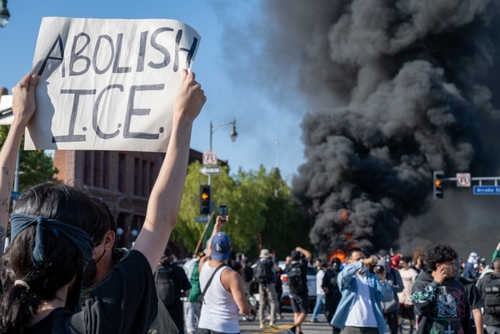Hollywood outrage meets a nationwide crackdown as Dean Cain embraces an ICE role while states expand enforcement partnerships to remove criminal illegal immigrants.
Dean Cain’s Stand Aligns With Intensified Enforcement
Dean Cain’s decision to support Immigration and Customs Enforcement arrives as multiple states broaden cooperation with federal agents to prioritize removal of noncitizens with criminal records. Public safety leaders and governors are leaning on existing law to deputize trained officers under ICE supervision, seeking to close gaps that allowed offenders to cycle through local systems. The backdrop features stepped-up federal directives, targeted operations, and fresh budget muscle, creating a coordinated push to remove those posing risks to communities.
Public reaction to Cain’s move mirrors the broader immigration debate: supporters view it as common-sense enforcement, while critics cast it as heavy-handed. Cain’s framing—stand firm when attacked—tracks with an environment where elected leaders promise to identify, detain, and transfer criminal offenders to ICE. That stance resonates with readers who watched years of permissive border policies fuel crime concerns, only now seeing state partners embed immigration checks within policing and corrections workflows.
Georgia and Virginia Expand 287(g)-Style Cooperation
Georgia directed training for 1,100 Department of Public Safety officers to assist ICE in identifying and apprehending offenders tied to immigration violations, signaling full-spectrum cooperation across the state’s policing footprint. The move aims to prevent repeat entries and keep criminal illegal offenders out of communities by aligning jail intake, field encounters, and transfers with federal processes. The policy message is deterrence: if you break U.S. laws and immigration laws, you will be identified and removed through coordinated action.
Virginia issued Executive Order 47 to enlist State Police and the Department of Corrections as partners in federal immigration enforcement, with a stated focus on removing dangerous criminal illegal immigrants. The order directs agencies to coordinate with ICE, use screening tools, and ensure custody handoffs do not fail due to paperwork or siloed systems. The practical effect is a tighter pipeline from arrest and conviction to federal transfer, reducing the chance serious offenders slip through jurisdictional cracks.
ICE Operations Intensify Against Criminal Offenders
ICE’s Enforcement and Removal Operations publicizes regular, multi-agency actions targeting “criminal aliens,” often emphasizing prior convictions and multiple unlawful entries. These operations highlight cooperation with state and local partners, reinforcing the policy arc where field officers trained under federal guidance identify removable noncitizens during routine policing. Visibility of arrests, detainers, and removals signals a high-certainty environment for adjudicated offenders, aligning with the deterrence messages from governors and law enforcement leaders.
Operational communiqués underscore a priority framework: target individuals who have criminal histories, threaten public safety, or re-enter after deportation. That focus addresses constituents’ demand for safety-first enforcement while leveraging new state capacity. As these operations scale, agencies face logistical strain—transport, detention space, court scheduling—but the policy commitment remains clear: coordinate across jurisdictions to ensure consequences are swift and consistent for criminal offenders who violate immigration law.
Funding Surge and Legal Tensions Shape the Road Ahead
New funding for detention and enforcement expands federal capacity to sustain operations, contract beds, and support field logistics, while advocacy groups warn of civil liberties risks and court backlogs. Legal analysts track aggressive executive actions that test statutory boundaries, including broad state cooperation and tightened relief pathways. The immediate effect is more screenings, more transfers, and more removals; the medium-term test is whether courts, counsel, and due process can keep pace with the scale of enforcement activity.
Readers should watch three pressure points: the speed of 287(g) trainings and certifications, the throughput of ICE detention and transport, and the capacity of immigration courts to adjudicate cases without prolonged detention. If these gears move in sync, public safety gains will be measurable in removals of offenders with serious criminal records. If they jam, the system risks bottlenecks critics can leverage, even as frontline officers continue to prioritize the worst actors for removal.
Sources:
Gov. Kemp, DPS Announce Further ICE Partnership
Congress Approves Unprecedented Funding for Mass Detention and Deportation
The Trump Administration’s Early 2025 Changes to Immigration Law

